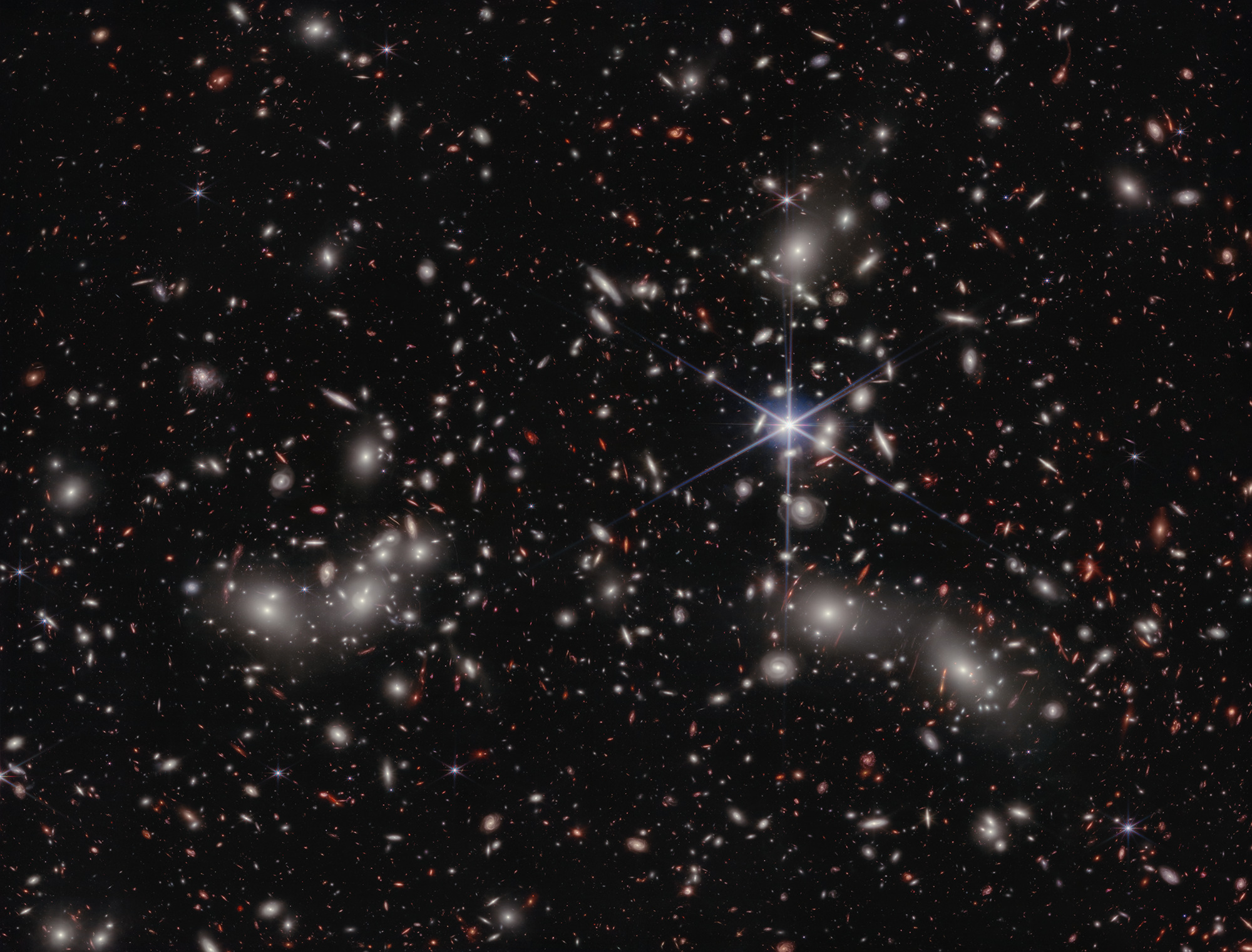
For the first time, in the distant Pandora’s Cluster, scientists detected the second and fourth most distant galaxies using NASA’s James Webb Space Telescope (JWST). A team led by Penn State researchers used new data to determine the distance of these ancient galaxies and learn about them.
By studying the light emitted by these galaxies using the JWST, the team determined they are almost thirty-three billion light years away. These super distant galaxies give us clues about how the very first galaxies in the universe might have come into existence, as reported by Phys.org.
Unlike other faraway galaxies that show up as tiny red dots in pictures, these new galaxies are larger and look like a peanut and a fluffy ball, researchers say. The researchers describe these galaxies in a paper published in the journal Astrophysical Journal Letters.
Meet UNCOVER-z13 and UNCOVER-z12.
Two distant galaxies found by JWST, with a suggested redshifts of z=13.079 and z=12.393 respectively.
If confirmed, they'll be the second and fourth most distant galaxies we have ever discovered (excluding HD1). pic.twitter.com/XXa05e3Y8U— Jwst Feed (@WebbFeed) August 17, 2023
Bingjie Wang, a postdoctoral scholar at Penn State and part of the JWST UNCOVER team, explains, “Very little is known about the early universe, and the only way to learn about that time and to test our theories of early galaxy formation and growth is with these very distant galaxies.”
“Prior to our analysis, we knew of only three galaxies confirmed at around this extreme distance,” said Wang. “Studying these new galaxies and their properties has revealed the diversity of galaxies in the early universe and how much there is to be learned from them.”
Detected light traveled 13.4 billion light years to reach the JWST
The light from these galaxies traveled a great distance to reach us, acting like a time machine. Scientists believe the light we see with the JWST was emitted by these galaxies when the universe was just about 330 million years old.
It traveled 13.4 billion light years to get to the JWST. However, because the universe has been expanding ever since, the galaxies are now about thirty-three billion light years away from Earth, as reported by Phys.org.
Joel Leja, an assistant professor of astronomy and astrophysics at Penn State and an UNCOVER team member, points out, “The light from these galaxies is ancient, about three times older than the Earth.”
These two galaxies are notably bigger than equally distant galaxies we already knew about. One of them is at least six times larger, stretching about two thousand light-years across.
To put this in perspective, our Milky Way is around a hundred thousand light-years across. However, Bingjie Wang notes that the early universe was especially compressed, so it is somewhat surprising that this galaxy is as large as it is.
See all the latest news from Greece and the world at Greekreporter.com. Contact our newsroom to report an update or send your story, photos and videos. Follow GR on Google News and subscribe here to our daily email!



